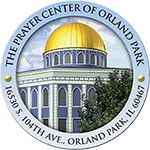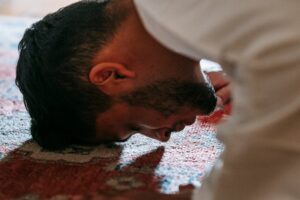Prayer in Islam may affect and direct social change. In this article, we will analyze the components of prayer to examine its social and cultural implications.
- Qiblah; the symbol of goal and purpose
Islam introduced the concept of Qiblah into our daily lives. The Qiblah is the symbol of goal and purpose. The Ka’bah in Mecca – the Sacred House of Allah – unifies Muslims and reminds them continuously of their common destination. Through al-Qiblah, Islam enabled its followers to visualize abstract concepts like unity.
Nowadays, it is essential to set goals for our societies and ourselves as well. Setting a common goal in a society inspires the movement of its members en masse to address challenges. Islam presented Allah as the ultimate and real goal. “To Allah belong the East and the West; wherever you turn, there is Allah’s countenance.” (2:115). “I have set my face, firmly and truly, towards Him who created the heavens and earth.” (6:79). The Qiblah transcends language, color, wealth, race, and every other identity; and unifies the Umma to one goal. This is clearly stated in Quran: “Allah has put affection between their hearts: Not if you had spent all that is in the earth, could you have produced that affection, but Allah has done it.” (8:63)
Moreover, al-Qiblah, helped Muslims enhance their awareness of space and time. In order to pray, Muslims must know their location in space in addition to the time of the day. For instance, praying noon prayer many times does not exempt you from praying at Asr or after sunset. Hence, prayer is a continuous reminder of our position in time. “Prayer is prescribed to the believers at stated times.” (4:103)
As the Qiblah guides and unifies the direction of the prayer, it affects the daily life of the Muslim society. The Qiblah was behind the scientific advances of Muslim society in mathematics, geography, and astronomy. Not only this, the Qiblah touched several other aspects of the Muslim society. For instance, houses in old neighborhoods used to face al-Qiblah. In addition, people would face the Qiblah when swearing to God.
The Imam standing the closest to Qiblah during prayer is a “symbol of realization” of a human being in a state closer to Allah. The Imam is a reminder and provider for guidance without control or compulsion. “Therefore, you give admonition, for you are not one to control their affairs” (88:21-22). Remember, the Imam is leading by example, and is not watching over the shoulders of the people behind. If anyone behind the Imam makes a mistake, the Imam will not notice. Nevertheless, if the Imam makes a mistake, many behind him or her will hurry to correct. The rows behind the Imam are also supposed to reflect the closeness to the Qiblah. Prophet Mohammad said, “Those endued with maturity and understanding must stand immediately behind me in prayer.”
By Walid Khayr




